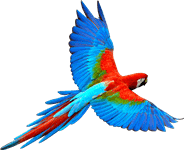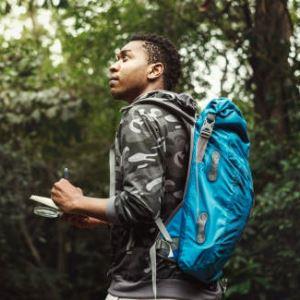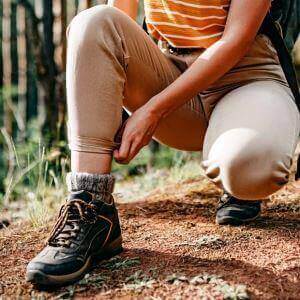 Kenya has long been a favored destination for adventure-seeking Canadians, and bird watching paired with wildlife volunteering is an ideal way to explore its natural wonders. With its dramatic landscapes, diverse ecosystems, and welcoming communities, Kenya offers a truly immersive experience for nature lovers. Canadians can enjoy both serene birding safaris and impactful conservation projects while learning about one of the world’s richest biodiversity hotspots. Bird watchers will find Kenya especially rewarding. From the serene shores of Lake Naivasha to the acacia-dotted plains of the Maasai Mara, the country is teeming with vibrant birdlife. Species such as the African fish eagle, lilac-breasted roller, and lesser flamingo can be seen in various habitats. Canadians often appreciate the expert local guides who make these excursions both educational and memorable. Whether you are a beginner with a pair of binoculars or an avid birder documenting lifers, Kenya's birding trails promise unforgettable sightings. Beyond bird watching, many Canadians are drawn to Kenya for its wildlife volunteer opportunities. These programs are designed for individuals who want to make a positive impact on conservation efforts. Volunteering may involve activities such as tracking animals, collecting ecological data, assisting in community awareness programs, or supporting local rangers. These hands-on experiences offer not only a chance to give back but also a deeper understanding of the country’s ecological challenges and solutions. The best birding safari in Kenya & volunteer programs for Canadians often combine structured itineraries with flexibility, allowing travelers to engage meaningfully while enjoying the scenic beauty. These trips are ideal for solo travelers, families, or retirees looking to blend purpose with exploration. In many cases, accommodations are located within or near national parks and conservancies, providing easy access to both birding and conservation sites. Planning such a trip from Canada involves a few key steps. Begin by choosing a reputable tour operator or NGO offering volunteer placements. Check for necessary vaccinations, travel insurance that covers wildlife activities, and ensure your passport is valid well beyond your return date. Flights typically connect through major hubs like Amsterdam or Doha, with arrival in Nairobi as the gateway to your adventure. Kenya is a year-round destination, but timing your visit with the bird migration season or the dry season for optimal wildlife viewing can enhance your experience. With thoughtful preparation, Canadians can embark on a life-changing journey that contributes to wildlife protection and celebrates the joy of observing birds in their natural habitats. By combining passion, purpose, and exploration, bird watching and wildlife volunteer trips in Kenya offer Canadians an enriching path to connect with nature and give back to the planet. These immersive journeys not only foster a deep appreciation for Kenya's stunning biodiversity but also provide opportunities for meaningful engagement with conservation efforts. Canadians who embark on these trips often return with a renewed sense of purpose, lasting memories, and valuable insights into global environmental stewardship. Whether observing rare bird species or participating in hands-on wildlife projects, these experiences create lasting bonds between travelers and the natural world they aim to protect.
Kenya has long been a favored destination for adventure-seeking Canadians, and bird watching paired with wildlife volunteering is an ideal way to explore its natural wonders. With its dramatic landscapes, diverse ecosystems, and welcoming communities, Kenya offers a truly immersive experience for nature lovers. Canadians can enjoy both serene birding safaris and impactful conservation projects while learning about one of the world’s richest biodiversity hotspots. Bird watchers will find Kenya especially rewarding. From the serene shores of Lake Naivasha to the acacia-dotted plains of the Maasai Mara, the country is teeming with vibrant birdlife. Species such as the African fish eagle, lilac-breasted roller, and lesser flamingo can be seen in various habitats. Canadians often appreciate the expert local guides who make these excursions both educational and memorable. Whether you are a beginner with a pair of binoculars or an avid birder documenting lifers, Kenya's birding trails promise unforgettable sightings. Beyond bird watching, many Canadians are drawn to Kenya for its wildlife volunteer opportunities. These programs are designed for individuals who want to make a positive impact on conservation efforts. Volunteering may involve activities such as tracking animals, collecting ecological data, assisting in community awareness programs, or supporting local rangers. These hands-on experiences offer not only a chance to give back but also a deeper understanding of the country’s ecological challenges and solutions. The best birding safari in Kenya & volunteer programs for Canadians often combine structured itineraries with flexibility, allowing travelers to engage meaningfully while enjoying the scenic beauty. These trips are ideal for solo travelers, families, or retirees looking to blend purpose with exploration. In many cases, accommodations are located within or near national parks and conservancies, providing easy access to both birding and conservation sites. Planning such a trip from Canada involves a few key steps. Begin by choosing a reputable tour operator or NGO offering volunteer placements. Check for necessary vaccinations, travel insurance that covers wildlife activities, and ensure your passport is valid well beyond your return date. Flights typically connect through major hubs like Amsterdam or Doha, with arrival in Nairobi as the gateway to your adventure. Kenya is a year-round destination, but timing your visit with the bird migration season or the dry season for optimal wildlife viewing can enhance your experience. With thoughtful preparation, Canadians can embark on a life-changing journey that contributes to wildlife protection and celebrates the joy of observing birds in their natural habitats. By combining passion, purpose, and exploration, bird watching and wildlife volunteer trips in Kenya offer Canadians an enriching path to connect with nature and give back to the planet. These immersive journeys not only foster a deep appreciation for Kenya's stunning biodiversity but also provide opportunities for meaningful engagement with conservation efforts. Canadians who embark on these trips often return with a renewed sense of purpose, lasting memories, and valuable insights into global environmental stewardship. Whether observing rare bird species or participating in hands-on wildlife projects, these experiences create lasting bonds between travelers and the natural world they aim to protect.
Bird Watching and Wildlife Volunteer Trip Overview Table
| Category | Details for Canadians |
|---|---|
| Birding Hotspots | Lake Nakuru, Maasai Mara, Kakamega Forest |
| Wildlife Volunteer Sites | Ol Pejeta, Tsavo National Park, Samburu |
| Common Volunteer Tasks | Wildlife tracking, conservation education, habitat repair |
| Best Time to Visit | October to April (birding), dry seasons (volunteering) |
| Visa Requirements | Kenyan e-visa required; apply online before travel |
| Health Requirements | Yellow fever vaccine, hepatitis A, travel insurance advised |
| Travel Tips | Plan layovers, pack light gear, bring binoculars & sunscreen |
Best Bird Watching Destinations in Kenya for Canadians to Explore
Kenya is one of the most sought-after bird watching destinations in the world, and Canadians with a passion for avian species will find it especially rewarding. The country is home to more than 1,100 recorded bird species, thanks to its wide range of ecosystems including forests, wetlands, savannahs, and coastal areas. Whether you are a first-time visitor or a seasoned birder, Kenya delivers world-class opportunities to spot rare and exotic birds in their natural habitats. For Canadian travelers, Kenya’s birding circuits are both accessible and educational. Guided excursions often begin in the Rift Valley, where freshwater lakes such as Lake Naivasha, Lake Baringo, and Lake Nakuru attract large flocks of flamingos, pelicans, and storks. These lakes are also hotspots for kingfishers, herons, and cormorants, making them ideal for capturing stunning bird photography or simply enjoying quiet moments with nature. Moving westward, the Kakamega Forest offers a lush contrast to the open plains. As the only tropical rainforest in Kenya, it is rich in endemic species like the blue-headed bee-eater and Great Blue Turaco. Canadians who visit Kakamega often comment on the exceptional guiding services, where local experts help identify birds by call and behavior. These insights significantly enrich the experience, especially for those looking to expand their life list of bird species. The Maasai Mara is another key destination, famous not only for its big game but also for raptors and grassland birds. Secretary birds, martial eagles, and the elusive African finfoot can be spotted here. The region’s open landscapes make it easy to observe birds in flight or perched on acacia trees, creating ideal conditions for both amateurs and serious birders alike. Coastal regions such as Arabuko-Sokoke Forest and the Mida Creek mangroves provide access to Kenya’s marine and forest-dwelling species. Canadians who explore these areas can see the Sokoke scops owl and the endangered Clarke’s weaver, along with a vibrant array of shorebirds. These sites also offer a peaceful escape from the busier inland parks, often with fewer tourists and a stronger focus on birding. For those interested in combining leisure with learning, guided birdwatching tours in Kenya for Canadian travelers provide structured yet flexible itineraries. These tours typically include accommodations near birding hotspots, transport, and the expertise of local ornithologists who know the regions intimately. Many tours also emphasize ethical practices, such as respecting bird habitats and limiting group sizes to reduce disturbance. Bird watching in Kenya offers Canadians more than just a vacation. It’s a gateway to understanding complex ecosystems, supporting local conservation, and enjoying the sheer wonder of biodiversity. Whether it's your first birding trip or your tenth, Kenya has something new and exciting to offer every time. With thoughtful planning and a good guide, Canadians can experience a once-in-a-lifetime adventure through one of Africa’s richest bird habitats.
Where Can Canadians Go Bird Watching in Kenya's Top Wildlife Areas?
Kenya is an incredible destination for Canadians interested in combining wildlife exploration with hands-on conservation. With its rich biodiversity and expansive protected areas, the country is ideal for nature photography, especially for those participating in volunteer-based travel. From lush rainforests to sun-drenched savannahs, Kenya presents unforgettable photographic opportunities. Many Canadian volunteers seek out experiences that blend passion for nature with meaningful impact. One standout option is wildlife and bird photography tours in Kenya for volunteers from Canada, which offer immersive experiences unlike any other.
- Rift Valley Lakes and Flamingo Colonies: Home to iconic lakes such as Nakuru and Bogoria, the Rift Valley is a hotspot for bird photographers. Canadians can capture flocks of flamingos in shimmering pink hues and encounter a range of other species including pelicans and herons. These alkaline lakes provide a vibrant backdrop that enhances every photo, and local guides offer valuable insight on bird behavior to help volunteers time their shots for dramatic effect.
- Kakamega Forest: Kenya’s Tropical Bird Paradise: Kakamega Forest is a magnet for Canadian volunteers who want to photograph rare and colorful forest species. The Great Blue Turaco and the African blue flycatcher are just a few of the forest’s avian highlights. Soft light filtering through the canopy creates striking conditions for photography. Volunteers can also participate in habitat protection initiatives while sharpening their skills behind the lens.
- The Maasai Mara's Raptors and Savannah Birds: Famed for its open plains and rich wildlife, the Maasai Mara offers perfect conditions for photographing birds in flight. Raptors like martial eagles and vultures, as well as smaller birds like the superb starling, are plentiful. Canadians can join game drives focused on capturing split-second moments while also learning about raptor conservation and local Maasai stewardship of the land.
- Arabuko-Sokoke Forest and Coastal Habitats: Canada-based volunteers will find this coastal forest ideal for spotting and photographing elusive forest dwellers like the Sokoke scops owl. Close to Mida Creek, it also provides opportunities to shoot a wide array of shorebirds. Conservation projects here often focus on reforestation and species monitoring, giving volunteers a role in preserving the beauty they document.
- Amboseli National Park and Iconic Landscapes: Amboseli is not only known for its herds of elephants but also its avian population against a backdrop of Mount Kilimanjaro. Canadians can expect a rich combination of bird and wildlife subjects for photography, such as crowned cranes and bee-eaters. The lighting at dawn and dusk is ideal for landscape and wildlife compositions.
Kenya offers an unmatched experience for Canadian volunteers looking to blend conservation with photography. From vibrant forests to wide open savannahs, each region presents its own unique palette of wildlife and birds. When guided by local experts, Canadian travelers gain both photographic insight and cultural connection. These immersive tours ensure every moment contributes to both personal growth and environmental protection.?
Wildlife Conservation Volunteer Trips in Kenya for Canadians
For Canadians looking to make a difference while experiencing Africa’s iconic wildlife, Kenya offers a unique and fulfilling opportunity. Volunteering in wildlife conservation allows travelers from Canada to go beyond typical sightseeing and actively contribute to the protection of threatened species and ecosystems. Kenya's rich biodiversity and long-standing conservation efforts create a meaningful backdrop for those who want to combine passion with purpose. Volunteers can work across a variety of settings, from renowned national parks to community-led conservancies. These projects may include monitoring animal populations, helping with anti-poaching patrols, assisting in data collection, and supporting educational outreach. Such work not only helps safeguard endangered animals like elephants, rhinos, and big cats, but also strengthens conservation infrastructure through grassroots involvement. Canadians often find that volunteering in Kenya deepens their understanding of ecological issues and gives them a sense of connection with the natural world. In places like the Maasai Mara, Ol Pejeta, and Samburu, volunteers witness firsthand the daily challenges and triumphs of wildlife conservation. These areas are not only teeming with wildlife but are also communities where conservation is a way of life. Volunteering opportunities are usually organized through reputable NGOs and eco-tour operators. These programs provide orientation, training, and in most cases, accommodations and meals. Canadians often live near project sites, allowing them to immerse themselves in both the natural environment and the local culture. It’s a fully rounded experience where participants learn, contribute, and grow. One of the most compelling aspects of these programs is the balance they strike between structure and exploration. While the conservation work is hands-on and purpose-driven, volunteers also have the opportunity to enjoy game drives, cultural exchanges, and educational sessions. This makes for an enriching and well-rounded adventure. A volunteer wildlife conservation safari in Kenya for Canadians typically begins with research. It is essential to choose a program aligned with personal interests and environmental ethics. Applicants must also prepare travel documents, secure a visa, get recommended vaccinations, and arrange travel insurance that covers wildlife-related activities. Timing can significantly enhance the volunteer experience. Dry seasons are ideal for wildlife viewing and fieldwork, typically running from June to October and again from December to March. Though travel from Canada requires long-haul flights and stopovers, the outcome is a once-in-a-lifetime experience that leaves a lasting impact. Whether you are a student, a mid-career professional, or a retiree, volunteering in Kenya’s wildlife conservation programs offers a meaningful way to engage with the world. It provides a sense of accomplishment, builds cross-cultural connections, and fosters greater awareness of the importance of environmental stewardship. For many Canadians, the journey doesn’t end when they return home the lessons learned and memories made continue to influence their lives in powerful and enduring ways.
How Can Canadians Join Wildlife Volunteer Projects in Kenya?
For Canadians who dream of immersing themselves in meaningful travel, Kenya offers an ideal combination of conservation work and adventure. The country’s rich landscapes and biodiversity make it a hotspot for ecological engagement. Canadians can join wildlife volunteer programs that involve a wide range of activities, including fieldwork, community outreach, species tracking, and ecological data collection. These programs often take place in national parks and conservancies across the country, such as Tsavo, Samburu, and the Maasai Mara. Participants typically begin with orientation sessions that provide background on the region's ecosystems, conservation goals, and the specific tasks involved in the program. Canadians benefit from close collaboration with local experts and conservationists, gaining insight into Kenya’s unique environmental challenges. This hands-on experience also creates a sense of personal responsibility and connection to global conservation efforts. Volunteering is not just about work it’s also about cultural exchange and exploration. Many programs incorporate opportunities for sightseeing, guided safaris, and visits to local villages. This balance between service and discovery ensures that Canadian volunteers leave with a well-rounded perspective. Accommodations are usually eco-friendly lodges or shared volunteer housing close to project sites, providing easy access to the surrounding nature. Volunteers should prepare in advance by choosing a reputable organization, applying for a Kenyan e-visa, and ensuring they have the necessary health precautions like yellow fever vaccinations. Travel insurance is strongly advised, particularly policies that cover remote medical emergencies and conservation activities. Flights from Canada often include one or two layovers before landing in Nairobi or Mombasa, where most volunteer programs begin. Timing is important for maximizing both wildlife encounters and weather conditions. Dry seasons from June to October and December to March offer the best visibility for observing animals and completing fieldwork efficiently. During these periods, wildlife is more concentrated near water sources, making sightings more frequent and photography more rewarding. Some volunteer programs integrate additional outdoor experiences to enrich the journey. A Kenya wildlife conservation safari with birdwatching is one example, offering volunteers the chance to observe both large mammals and rare birds while contributing to their protection. These dual-purpose safaris are especially appealing for Canadians looking to combine their interest in photography or birding with hands-on conservation work. Joining a wildlife volunteer project in Kenya offers Canadians a rare opportunity to give back while exploring one of the world's most beautiful countries. It fosters new skills, global awareness, and unforgettable memories. Most importantly, it connects travelers to a broader movement dedicated to preserving Earth’s natural heritage for future generations.
Planning Wildlife and Bird Watching Trips in Kenya from Canada
 Planning a wildlife and bird watching trip to Kenya from Canada is an exciting and fulfilling endeavor, especially for students and young travelers eager to explore nature while making a difference. With some preparation, Canadians can ensure their journey is both smooth and impactful. Choosing the right tour or volunteer organization is the first step. It is essential to partner with providers that offer a blend of conservation activities and educational experiences, tailored for younger participants who are curious about ecology and wildlife preservation. Valid travel documents are a must. Canadians should check that their passports are valid for at least six months beyond their travel dates. A Kenyan e-visa is also required and can be easily obtained online before departure. Health considerations include recommended vaccinations such as yellow fever, hepatitis A, and typhoid. Comprehensive travel insurance that includes coverage for adventure and wildlife-related activities is strongly advised. Flights from Canada to Kenya generally involve one or two stopovers, often in European or Middle Eastern cities. Most travelers land in Nairobi, which serves as the hub for reaching key wildlife areas. From there, organized transportation arranged by tour or volunteer programs typically guides visitors to their respective conservation sites or birding locations. Timing your trip wisely can enhance the overall experience. Kenya's birding season peaks during the migratory months from October to April, offering incredible sightings of both resident and migratory species. For volunteering and wildlife tracking, the dry seasons; from June to October and December to March are ideal. These periods make it easier to spot wildlife gathered around water sources and to conduct fieldwork without interruptions from heavy rain. Packing essentials should include lightweight and breathable clothing, sturdy hiking shoes, insect repellent, sunscreen, and binoculars. A good camera is also beneficial, particularly for students interested in wildlife photography. Some organizations provide equipment for field research, but it’s always useful to check in advance. For younger Canadians, especially those in high school or university, eco-volunteer birding tours in Kenya for Canadian students present a rare opportunity to engage in real-world conservation work. These programs are designed to inspire the next generation of environmental stewards through direct interaction with nature and mentorship from experienced ecologists. Whether it’s recording bird species in the Kakamega Forest, helping rehabilitate habitats in the Maasai Mara, or educating local communities about conservation, the impact of these efforts goes far beyond the individual. With careful planning and the right mindset, Canadians can turn their interest in birds and wildlife into an unforgettable journey of education, service, and global awareness. Kenya’s welcoming spirit, rich biodiversity, and conservation focus make it an ideal destination for students aiming to grow both personally and academically while supporting the planet's natural heritage.
Planning a wildlife and bird watching trip to Kenya from Canada is an exciting and fulfilling endeavor, especially for students and young travelers eager to explore nature while making a difference. With some preparation, Canadians can ensure their journey is both smooth and impactful. Choosing the right tour or volunteer organization is the first step. It is essential to partner with providers that offer a blend of conservation activities and educational experiences, tailored for younger participants who are curious about ecology and wildlife preservation. Valid travel documents are a must. Canadians should check that their passports are valid for at least six months beyond their travel dates. A Kenyan e-visa is also required and can be easily obtained online before departure. Health considerations include recommended vaccinations such as yellow fever, hepatitis A, and typhoid. Comprehensive travel insurance that includes coverage for adventure and wildlife-related activities is strongly advised. Flights from Canada to Kenya generally involve one or two stopovers, often in European or Middle Eastern cities. Most travelers land in Nairobi, which serves as the hub for reaching key wildlife areas. From there, organized transportation arranged by tour or volunteer programs typically guides visitors to their respective conservation sites or birding locations. Timing your trip wisely can enhance the overall experience. Kenya's birding season peaks during the migratory months from October to April, offering incredible sightings of both resident and migratory species. For volunteering and wildlife tracking, the dry seasons; from June to October and December to March are ideal. These periods make it easier to spot wildlife gathered around water sources and to conduct fieldwork without interruptions from heavy rain. Packing essentials should include lightweight and breathable clothing, sturdy hiking shoes, insect repellent, sunscreen, and binoculars. A good camera is also beneficial, particularly for students interested in wildlife photography. Some organizations provide equipment for field research, but it’s always useful to check in advance. For younger Canadians, especially those in high school or university, eco-volunteer birding tours in Kenya for Canadian students present a rare opportunity to engage in real-world conservation work. These programs are designed to inspire the next generation of environmental stewards through direct interaction with nature and mentorship from experienced ecologists. Whether it’s recording bird species in the Kakamega Forest, helping rehabilitate habitats in the Maasai Mara, or educating local communities about conservation, the impact of these efforts goes far beyond the individual. With careful planning and the right mindset, Canadians can turn their interest in birds and wildlife into an unforgettable journey of education, service, and global awareness. Kenya’s welcoming spirit, rich biodiversity, and conservation focus make it an ideal destination for students aiming to grow both personally and academically while supporting the planet's natural heritage.
What Should Canadians Know When Planning Kenya Wildlife Trips?
Planning a wildlife trip from Canada to Kenya involves more than just booking a flight. It's a rewarding journey that requires thoughtful preparation and awareness of both travel logistics and conservation etiquette. With Kenya's diverse wildlife and birding opportunities, Canadians can enjoy a meaningful adventure that contributes to global conservation awareness.
- Choose the Right Season for Your Travel Goals: Kenya's climate varies throughout the year, and timing can greatly influence your experience. The dry seasons from June to October and December to March are ideal for game viewing and volunteer projects, while October to April welcomes migratory birds for peak birdwatching.
- Select a Reputable Tour or Volunteer Organization: Canadians should ensure that they choose a program or tour provider that is transparent, ethical, and experienced. Look for organizations that prioritize community involvement and conservation education. Reading reviews and verifying certifications or affiliations is highly recommended.
- Prepare Travel Documents and Medical Needs Early: A valid passport and Kenyan e-visa are required. It’s essential to apply for the visa online before traveling. Also, vaccinations such as yellow fever, hepatitis A, and typhoid are strongly advised. Consult a travel clinic several weeks prior to your trip for up-to-date medical recommendations.
- Pack Smart for the Wildlife Environment: Essential items include lightweight clothing, sturdy hiking shoes, a wide-brimmed hat, insect repellent, sunscreen, and binoculars. Canadians heading to more remote conservation areas should also consider power banks, water purifiers, and layered clothing for cool mornings and hot afternoons.
- Respect Local Cultures and Environmental Guidelines: Being a respectful traveler is vital. Canadians should be mindful of local customs, wildlife observation rules, and sustainability practices. Avoid single-use plastics, stay on designated paths, and follow the lead of local guides during wildlife encounters.
- Stay Insured and Informed: Comprehensive travel insurance that covers medical emergencies, cancellations, and wildlife-related activities is a must. It's also wise to register your travel with the Canadian government’s "Register of Canadians Abroad" service for updates and assistance.
Kenya offers Canadians a unique opportunity to witness the wonders of nature while participating in meaningful conservation. Proper planning ensures a smooth, enriching journey. Understanding the best seasons, packing wisely, and choosing the right guides will make a significant difference in the quality of your experience. Whether you're trekking through rainforests, spotting lions on the savannah, or observing flamingos at sunrise, Kenya is a destination that leaves a lasting impression. Equally important is the ability to contribute to local conservation efforts. Volunteering with credible organizations allows Canadians to participate in wildlife tracking, habitat restoration, and environmental education. These experiences deepen one’s understanding of the challenges facing wildlife today and offer a platform for sustainable impact. By preparing with intention and traveling respectfully, Canadians can make the most of their Kenyan wildlife experience transforming it from a mere vacation into an opportunity for learning, giving back, and growing as global citizens.



